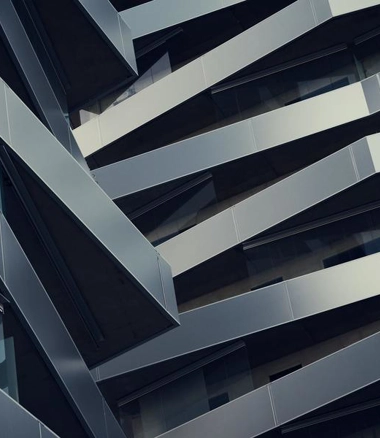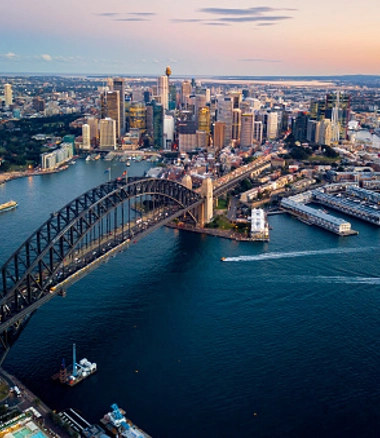
Global warming and climate change are two of the long ongoing issues the world has been facing for the last couple of decades. As more and more people become conscious of their carbon footprint, the demand for more environmentally friendly buildings has increased.
And so, this has given rise to the term “net-zero building.”
A net-zero building is a structure that uses no more energy than it produces. In order to achieve this, the building must create its own renewable energy on-site. The main goal of a net-zero building is to lessen greenhouse gas emissions to minimise environmental impacts. There are several ways to do this, such as
-
Solar panels
-
Wind turbines
-
Geothermal heating
-
Cooling systems
So far, there are over 2,500 net-zero buildings in the world. These structures range from homes to office buildings and everything in between. The initiative to construct more sustainable buildings comes from the commitment of many countries, including Australia, to increase the use of renewable sources to supply the world’s energy demand to around two-thirds by 2050.
As an engineer, you can play a critical role in helping achieve this goal by designing sustainable and energy-efficient buildings.
Advantages of a Net-Zero Building
There are many advantages to having a net-zero building. The most obvious is that it produces no carbon emissions, which many countries try to achieve as part of their commitment to the Paris Climate Agreement.
Some other long-term benefits of a net-zero building include:
-
Energy efficiency: Net-zero buildings are more energy efficient, saving money on energy costs in the long run. Plus, it is a hedge against future energy price increases for building owners.
-
Better indoor air quality: Compared to traditional buildings, net-zero buildings are designed to be airtight and well-insulated. Doing so prevents outside pollutants from entering and traps any pollutants produced inside the building.
-
Reliability: Net-zero buildings are more reliable than your average building. For example, you no longer need to worry about blackouts, power surges, and brownouts because the building has generators that run on renewable energy.
Now, as the demand for these buildings increases, so does the need for qualified engineers who can design and build them. And Australia is eyeing them as well, so upcoming Australian engineers should definitely focus on net-zero building design.
Because of Australia’s hot climate, there is plenty of potential for solar power. Additionally, Australia has a lot of wind, making it a great location for wind turbines. Finally, net-zero buildings are great for the environment. By designing more environmentally friendly buildings, engineers can help to make a difference in the fight against climate change.
Net-Zero Buildings Around the World
So far, there have been several world-renowned examples of net-zero buildings worldwide. Here are some of the most notable buildings and what you can learn from them as an engineer:
1. Bullitt Center in Seattle, USA

The Bullitt Center in Seattle is a leading edge in sustainable architecture and an icon of the Living Building Challenge. It was the first commercial office building in the United States to be certified under the Living Building Challenge 3.0 (LBC), one of the world’s most stringent sustainable design standards. To achieve an LBC certification, a building must operate for 12 consecutive months using only on-site renewable energy sources and collecting all water.
Energy
The Bullitt Center features a 675-kilowatt photovoltaic array on its south-facing roofーthe largest rooftop solar installation in Washington State at the time of its completion. The array generates enough electricity to power the 52,000-square-foot building and its occupants throughout the day, even during Seattle’s dark and rainy winters. For excess electricity, they return it to the power grid.
Water
The Center also has a rainwater harvesting system that uses a parapet roof to capture rainwater and store it in an underground 56,000-gallon concrete cistern for toilets, sinks, showers, and drinking water. To produce potable water, the Center filters the rainwater to achieve regulatory approval for the rainwater-to-potable water system.
On top of all that, they use a greywater recycling system to treat water used in sinks and showers for reuse in toilets. Together, these systems allow the building to capture and treat all the on-site water, eliminating the need for city water.
What you can learn: The Bullitt Center is a great example of how an office building can be self-sufficient. The Bullitt Centre can operate without any negative environmental impact by generating its own electricity and collecting its own water. Additionally, the building’s rainwater harvesting and greywater recycling systems are great examples of how office buildings can conserve more water in face of droughts.
2. SDE4 in Singapore

The School of Design & Environment 4 (SDE4) is a research and teaching facility at the National University of Singapore and an excellent example of a net-zero energy building. The building opened in Singapore in January 2019 and is the first net-zero building in the country.
SDE4 is a six-storey building and spans 8,588 square metres. The building was designed to promote design, sustainability, and education in Southeast Asia. When it comes to the construction of the building, they optimised it to facilitate lateral ventilation and comfortable natural light.
Energy
To achieve net-zero energy status, SDE4 generates all the energy it needs on-site by fitting its roof with 1225 solar panels. The solar panels generate enough power for the building’s annual energy requirements. In addition, daily surpluses go into the campus grid for the surrounding buildings’ usage, providing electrical energy at night.
For air conditioning, the building features an innovative hybrid cooling system that supplies 100 per cent fresh pre-cooled air. Although the air produced is at higher temperatures, they augmented it with elevated air speeds from ceiling fans.
Since 2019, the building has had a positive energy balance and can operate with an approximately 30 per cent surplus.
As for water, SDE4 collects rainwater from the roof and uses it for toilet flushing and landscape irrigation. The remaining unused water goes to a simulated wetland before being discharged into sewers.
What you can learn: SDE4 is a great example of how you can design a large building to be net-zero energy. The building’s use of solar panels and innovative cooling systems are notable examples of sustainable design features you can incorporate into a building.
3. Indira Paryavaran Bhawan in New Delhi, India

Indira Paryavaran Bhawan is the headquarters of the Ministry of Environment and Forest in India. The building is India’s first net-zero building constructed in 2014ーsetting a deep-rooted example for conventionally designed commercial built forms.
Indira Paryavaran Bhawan is a 12-storey building with a total floor area of 36,000 square metres. Its structure design encompasses a unification of active and passive strategies to help reduce energy demands, such as:
-
Optimal Orientation of the Blocks: They covered more than 50% of the outdoor area with appropriate vegetation and 75% of the building’s floor space uses daylight. Through this, they could reduce ambient temperate and lessen energy consumption.
-
High-efficiency Solar Panels: Indira Paryavaran Bhawan meets its energy demand by producing on-site energy to achieve net-zero criteria. The building uses 70% less energy than a conventional building.
-
Diverse Energy-Efficiency Mechanisms: They detailed the building with envelope insulation and fenestration design through UPVC windows, high-efficiency glass, and a high reflectance terrace to reduce heat intake and maintain a cool temperature in the building.
Indira Paryavaran Bhawan also conserves and optimises water use by recycling water waste on-site. As a result, the building reduced its overall water consumption by 55% by using low discharge water fixtures, low demand plants in landscaping, rainwater harvesting, and geothermal cooling.
What you can learn: As India’s first net-zero building, Indira Paryavaran Bhawan is a notable example of how you can design a commercial building to achieve sustainability. The building’s use of solar panels, efficient cooling mechanisms, and water recycling are all sustainable design features to look up to.
Sustainable Building Designs for the Future
As the global population continues to increase and urbanisation becomes rampant, our energy consumption also increases. However, embracing technological progressions across the world leads us to a cleaner, greener, and more sustainable future.
Now more than ever, as an Australian engineer, it’s vital to focus on constructing carbon-neutral and energy-efficient buildings to help conserve our natural resources without compromising design.





